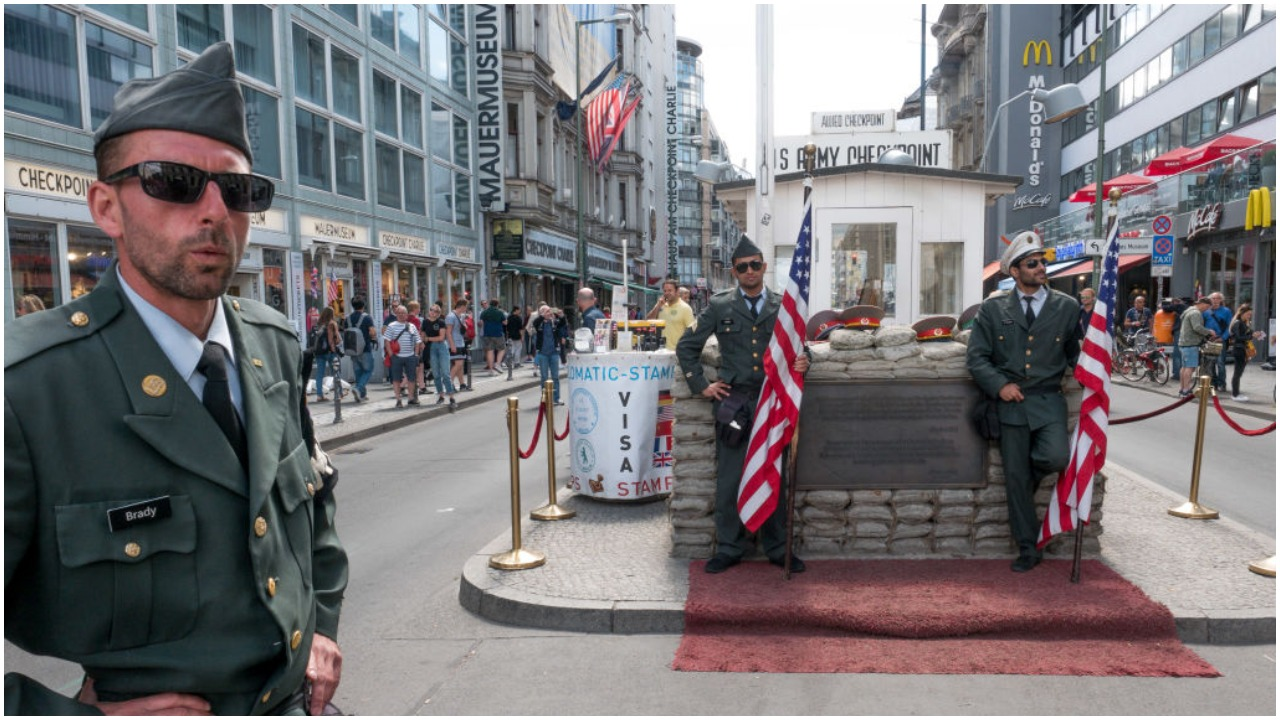Actors wearing US Army uniforms have been banned from posing at Checkpoint Charlie, the famous crossing between East and West Berlin during the Cold War.
According to authorities in the Mille district of Berlin, the actors were demanding money from tourists for photographs at the historic site where Friedrichstrasse and Zimmerstrasse meet.
East and West Berlin were separated by the Berlin Wall from 1961 to 1989. Checkpoint Charlie was one of three crossing points in and around the city during that time.
The others were Checkpoint Alpha and Checkpoint Bravo. The three sites were named for the first three letters in the NATO phonetic alphabet.
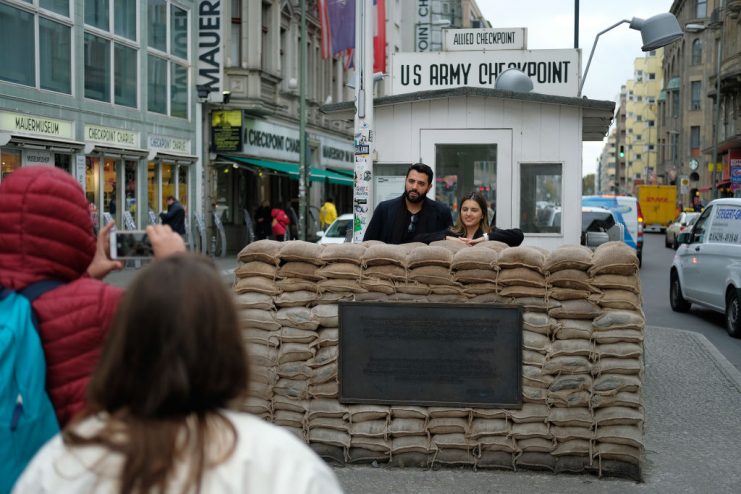
Checkpoint Charlie connected the American Zone with East Berlin. The American Zone was one of three Allied-controlled zones in West Berlin. Charlie was the only point for foreigners visiting Berlin could cross between the two sides of the wall.
Charlie was famous for a standoff in October 1961 between US and Soviet tanks. It was dismantled in June, 1990, when German reunification was nearly complete. Now it is one of the prime tourist attractions in Berlin.
Germany is celebrating 30 years since the dismantling of the Wall which had been designed to keep residents of communist East Berlin from moving to the democratic West Berlin.
Authorities revoked the performing license for Dance Factory, the group of performers who posed at the checkpoint.
According to the actors, they only accepted voluntary payments for photos and souvenir passport stamps.
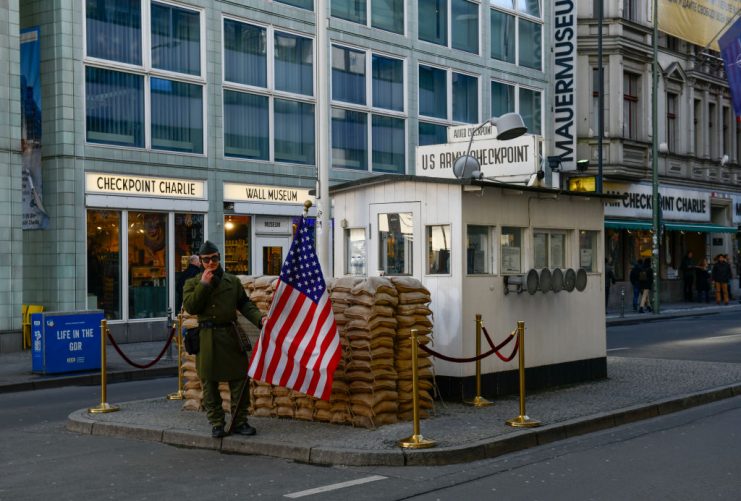
But the city received numerous complaints from tourists about the tactics of the Dance Factory performers. An undercover operation consisting of police officers posing as tourists found that the actors were demanding a €4 ($4.5; £3.5) fee and being verbally abusive to anyone who refused to pay.
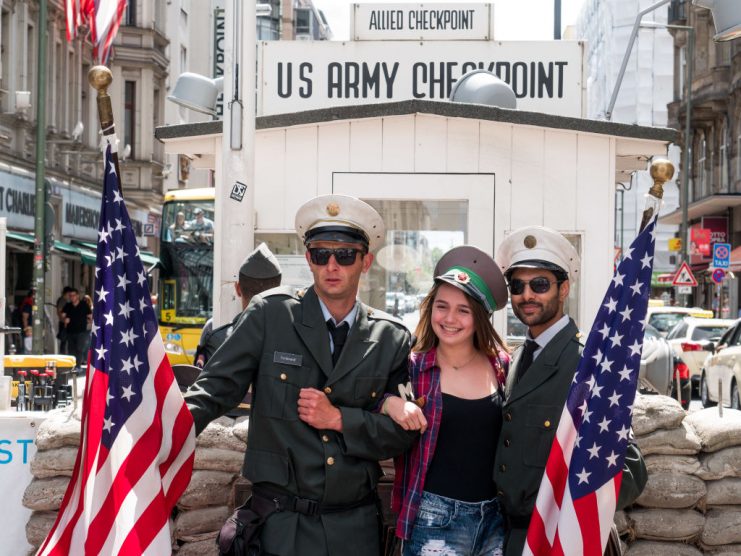
According to Stefanie Kunze, a spokesperson for the Mille district, actors were literally forcing people to pay for pictures with the performers.
Kunze said that the group was never authorized to pose as US soldiers and that police had merely tolerated them until now. She said that the authorities will be monitoring the site and will intervene id any imposter soldiers try to continue working at the checkpoint.
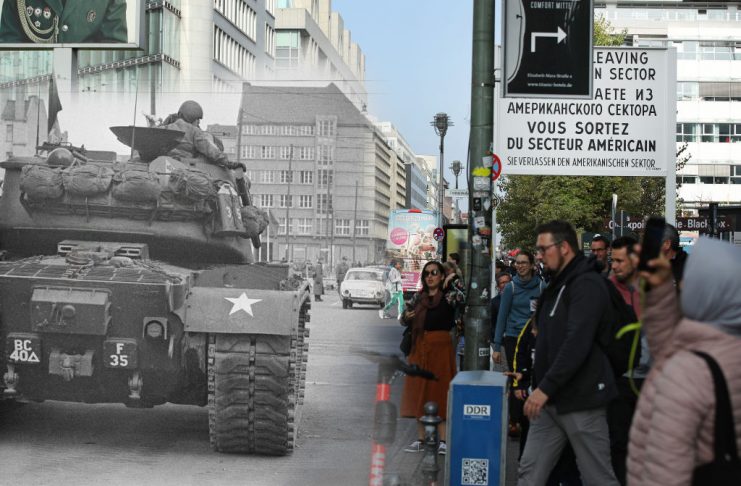
Berlin requires groups that charge money to obtain a permit for their performances.
For over 20 years, actors have posed as US soldiers at the site. Many in Berlin have expressed dissatisfaction with turning the site into a tourist trap. Among other things for sale in the area are fake Soviet Red Army fur hats, gas masks, and pieces of the Berlin Wall.
$5,500 per day.
The location of Checkpoint Charlie today consists of a row of bricks which mark the path of the Wall. A replica of the booth and sign are there but the original booth and sign are now in the Allied Museum in Berlin-Dahlem.
Another Article From Us: Instagram Influencer, 22, Claims Learning About WW2 Would Hit Millennials’ Mental Health
Tom Luszeit, the head of Dance Factory, disputes that figure. He told CBS News that he would be a millionaire if they made that kind of money. He also disputed that any of the performers abused visitors to the site.
